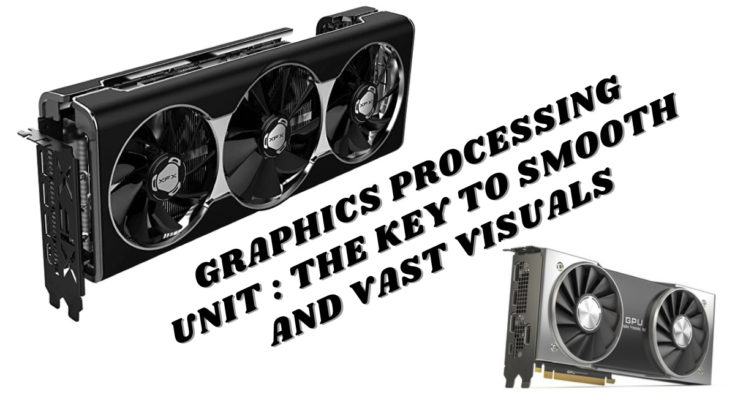GRAPHICS PROCESSING UNIT
A graphics processing unit (GPU) is a specialized electronic circuit designed to rapidly manipulate and alter memory to accelerate the creation of images in a frame buffer intended for output to a display device. GPUs are primarily used in video game consoles, personal computers, and mobile devices to render high-quality graphics, animations, and videos.
GPUs can perform calculations in parallel, which makes them particularly useful for machine learning, scientific computing, and other data-intensive applications that require large amounts of computational power. They can be used to accelerate the processing of large datasets, such as those used in simulations, weather forecasting, and genomics research.
Modern GPUs typically have hundreds or thousands of small processing units, known as cores, that work together to perform complex calculations. They are designed to be highly efficient at performing certain types of operations, such as matrix multiplication and convolution, which are commonly used in deep learning and other types of machine learning algorithms.
GPU : THE KEY TO SMOOTH AND VAST VISUALS
GPUs play a crucial role in providing smooth and visually impressive experiences in a wide range of applications, including video games, virtual and augmented reality, video rendering, and more.
The high parallel processing power of GPUs allows for complex calculations and graphics rendering to be done quickly and efficiently, resulting in smooth, high-quality visuals. This is especially important in video games, where high frame rates and low latency are critical for providing an immersive experience.
In addition, GPUs can handle multiple streams of data simultaneously, which makes them well-suited for handling large amounts of data in real-time. This is important for applications such as video editing and rendering, where large amounts of data need to be processed quickly and efficiently.
Overall, the GPU is a key component in modern computing systems, allowing for high-performance graphics and data processing capabilities that are essential for many applications.
TYPES
There are two main types of GPUs: integrated and dedicated.
I. INTEGRATED GPUs:
Integrated GPUs are built into the CPU of a computer or mobile device, and they share the same memory as the CPU. They are generally less powerful than dedicated GPUs and are designed to handle basic graphics tasks, such as web browsing, video playback, and office applications.
II. DEDICATED GPUs:
Dedicated GPUs are separate processing units that are designed specifically for graphics processing. They have their own dedicated memory and are more powerful than integrated GPUs. Dedicated GPUs are used in high-performance applications such as video games, virtual reality, 3D modeling, scientific simulations, and more.
Dedicated GPUs can also be further classified into two types:
1. CONSUMER GPUs: These are designed for consumer-level applications such as gaming, video editing, and graphics design. They are typically more affordable and have lower power consumption.
2. PROFESSIONAL GPUs: These are designed for professional-level applications such as 3D modeling, animation, and scientific simulations. They are more expensive than consumer GPUs and have higher power consumption, but they offer higher performance and more advanced features, such as double-precision calculations, error correction, and advanced driver optimizations.
FUNCTIONS
The main function of a GPU is to accelerate graphics processing, but it also has several other functions, including:
1. RENDERING:
The GPU is responsible for rendering 3D graphics and generating images from mathematical models. It performs calculations to determine the position, color, and lighting of each pixel in a scene, and then creates the final image that is displayed on the screen.
2. VIDEO DECODING:
The GPU is capable of decoding compressed video formats, such as H.264 and HEVC, which are commonly used in streaming video and video playback. This frees up the CPU to handle other tasks and results in smoother video playback.
3. MACHINE LEARNING:
The high parallel processing power of GPUs makes them ideal for machine learning applications, such as neural networks and deep learning algorithms. They are used to train and run these models, which require massive amounts of computational power.
4. CRYPTOGRAPHY:
GPUs can also be used for cryptographic operations, such as hash functions, encryption, and decryption. They are especially useful for mining cryptocurrencies, which require a large amount of computational power.
5. GENERAL-PURPOSE COMPUTING:
GPUs can be used for general-purpose computing tasks, such as scientific simulations, data analysis, and high-performance computing. They are particularly useful for tasks that can be parallelized, such as matrix multiplication and image processing.
Overall, the GPU is a versatile processing unit that has many functions beyond graphics processing, and it plays a critical role in a wide range of applications, from gaming and entertainment to scientific research and machine learning.



